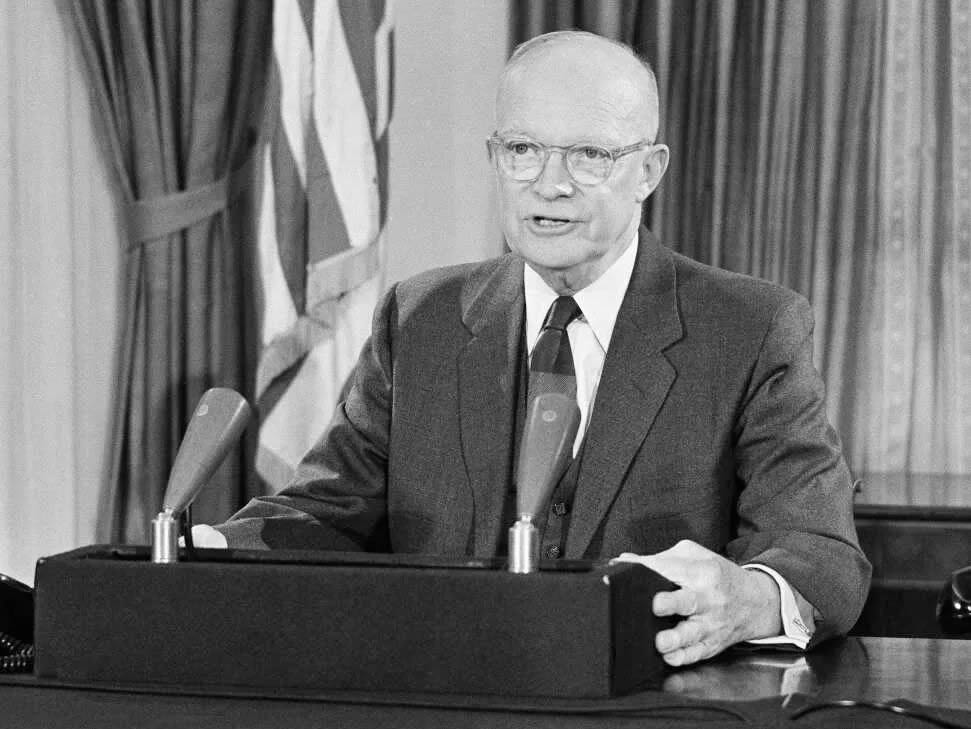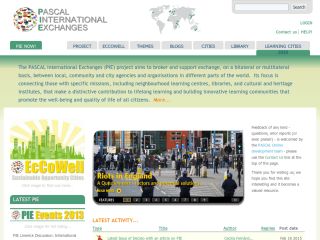Cities, Regions, and American National Security | The Urban Lens Newsletter
Yesterday was the 70th anniversary of an obscure bureaucratic document with the formal title of “NSC 162/2 Statement of Policy by the National Security Council.” The document was finalized on October 30, 1953.

NSC 162/2 marked the end of a year of intense debates within the small circle of senior advisors who surrounded Dwight Eisenhower as he organized his new administration and transitioned from the status of war hero to the role of President of the United States. The document was marked “TOP SECRET,” and came with the following bureaucratically understated warning:
“It is requested that special security precautions be observed in the handling of the enclosure and that access to it be very strictly limited on an absolute need-to-know basis.”
That warning applied directly to each of the eight senior members of Eisenhower’s initial National Security Council. They included the Secretary of the Treasury, Attorney General, Director of the Bureau of the Budget, Chairman of the Council of Economic Advisors, Chairman of the Atomic Energy Commission, the Federal Civil Defense Administrator, Chairman of the Joint Chiefs of Staff, and the Director of Central Intelligence.
Historians credit the language of NSC 162/2 as a tectonic shift in the official national security policies of the U.S. Government. That shift became known as "The New Look" in American national security.
So what was new about the New Look, and how did it relate to cities?
First, what was the New Look? The New Look redefined the sources of American national security within the context of the nuclear age. Previously, America’s primary source of military power had been defined best by Joseph Stalin. In 1948 Stalin credited the Allied victory to America’s unique power to mass produce conventional weapons of warfare: ships, submarines, airplanes, tanks, guns, ammunition, and all the material needed to wage conventional war on land, air, and sea.
In the years following the war, however, the strategic value of America’s conventional mass production capacity dropped quickly. The U.S. and its western European allies soon found themselves in a Cold War standoff with their former Allie, the USSR.
The democracies on the Western side of the Iron Curtain were forced by their citizens to demilitarize quickly. Soldiers went home and factories went back to making cars and refrigerators.
Yet Stalin had little need to appease domestic political expectations. Soviet wartime divisions remained in place up and down the Iron Curtain. The USSR’s rapid rebuilding program gave priority to military buildup. Stalin’s iron-fisted reign of postwar terror revitalized the ideological goal of extending Communist control westward to Germany, Italy, France, and the United Kingdom.
Yet an uneasy peace held in the heart of Europe despite the dangerously unequal balance of conventional forces along the Iron Curtain. That peace relied on the ambiguous assumption that a conventional Soviet attack would be met with an American nuclear response. This was a powerful deterrent. But the logic of this response had a very large hole in its center.
If the Soviets ever attacked, within hours they would occupy large areas of allied territory, most of which would be in West Germany. The only American nuclear weapons that could respond were stationed in Europe. Intercontinental ballistic missiles did not yet exist. Would Truman really annihilate Western European cities, and millions of civilians, with American nuclear weapons to stop a conventional Soviet attack? And even if he tried, would the Allies really allow that to happen? American nuclear weapons were stationed on their territories.
This core ambiguity was washed away by the NSC 162/2’s New Look. Several months before NSC 162/2 was finalized, the Soviet Union detonated its own first hydrogen bomb and Stalin died unexpectedly. American military intelligence confirmed that Stalin had not designated a clear successor. But regardless of who would lead the USSR, the Soviets could likely deliver one or more hydrogen bombs to the territorial U.S. by long-range aircraft.
This changed the horrifying calculus of nuclear warfare and ushered in the New Look, which established official American policy that if the Soviets ever started a ground war in Europe, that war would escalate immediately to an existential nuclear attack on the Soviet homeland to prevent an attack on the U.S. homeland. The New Look evolved over time into the more broadly known policy known as “mutual assured destruction,” or MAD.
In the world of the NSC 162/2’s New Look, the primary source of American national security became America’s ability to deliver swift and certain nuclear annihilation to the command-and-control centers of the Soviet Union. The secondary source of American national security became the ability for the U.S. to survive that type of attack with enough governmental and economic capacity to continue offensive attacks against the Soviet Union and to continue functioning as the United States.
So, how did American cities factor into the New Look?
In the short run, the language of NSC 162/2 argued in favor of ensuring that economic and command functions within the U.S. be “dispersed with a view of minimizing destruction by enemy attack …”. In other words, American national security would be enhanced if all major civilian and military components of American society would decentralize. In the context of 1953, that meant dispersing away from the East Coast and the industrial heartland. The vision of a secure America was a nation that was distributed more evenly across the North American continent. This had little to do with economics. It was the new calculus of national security in the nuclear age. NSC 162/2 urged all components of the Federal government to embrace that goal, on a Top Secret, need-to-know basis.
In the long run, NSC 162/2 identified additional goals. The most fundamental one was to make massive investments in “scientific research and development so as to ensure superiority in quantity and quality of weapons systems, with attendant continuing review of the level and composition of forces and the industrial base required for adequate defense and for successful prosecution of general war.”
Stalin thought American mass production won World War Two. But Eisenhower endorsed the concept that Stalin’s Soviet Union would be defeated by American science.
When that policy was established, it had no geographic component. But Eisenhower’s policy makers soon embraced ideas that had percolated for years among academics (most of whom had served in World War Two intelligence agencies) that argued in favor of targeting scientific research on specific topics in specific places. These ideas blended into the origins of a new type of “regional science.”
The Manhattan Project was an iconic model. World experts in many fields of science were concentrated into one place. Except it was an artificial settlement constructed in a deliberately inhospitable place during extraordinary wartime conditions. It worked well for the task of developing the first atomic weapons. But it was unsustainable as a model of a long-term place where continuous scientific breakthroughs and technological innovations could occur.
Consequently, U.S. government investment in science and technology for offensive nuclear weapons and state-of-the-art systems of delivering them to the Soviet Union would be concentrated in a series of specific places that were already established cities. Not one place, but a network of places that would be dispersed around the continent to maximize the chance of mission survival even if the U.S. came under direct Soviet nuclear attack. This goal would be pursued aggressively, but on a Top Secret, need-to-know basis.
Seventy years ago, yesterday, this obscure document was circulated among a small handful of the most powerful executives at the top of the U.S. government. The policies it established produced the geographic pattern of the military and civilian institutions of American national security. That network of institutions, which Eisenhower later called the “military-industrial complex,” have evolved through several different eras. But the core strategies of dispersing industries that relate to national security across the continent and developing multiple dispersed centers of science and technological innovation to “ensure superiority in quantity and quality of weapons systems” remains intact today.
The consequences of these policies are one of the least studied aspects of our efforts to understand the rapid growth of some American cities, the continuing vitality of others, and the decline of many. How much of the variation in economic prosperity among U.S. cities today can be tied directly to the consequences of Dwight Eisenhower’s New Look for American national security as described in NSC 162/2?
Bob Gleeson
 Printer-friendly version
Printer-friendly version- Login to post comments






